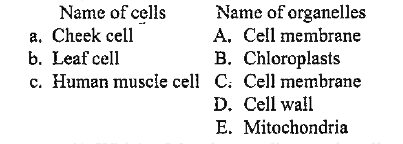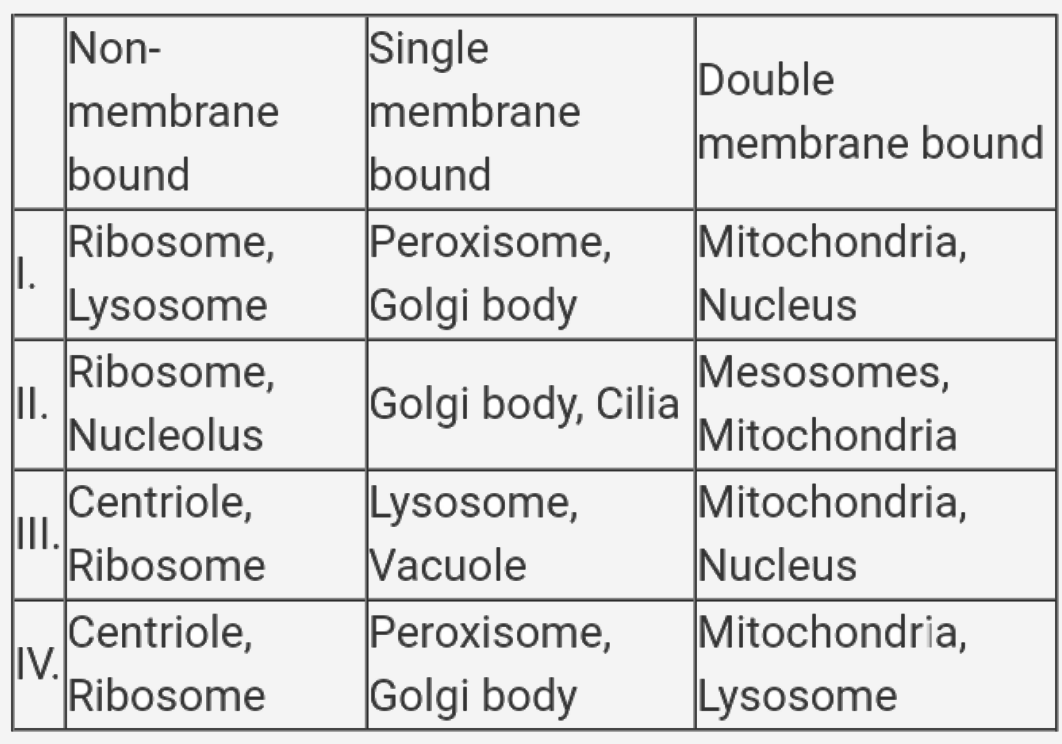What are major cell organelle of the animal cell?
Step-by-Step Text Solution:
1. Understanding Cell Organelles: Cell organelles are specialized structures within a cell that perform distinct functions necessary for the cell's life and activities. In animal cells, these organelles are essential for various cellular processes.
2. Identifying Major Organelles: The major cell organelles found in animal cells include:
- Nucleus: The control center of the cell that contains genetic material (DNA) and regulates cell activities.
- Mitochondria: Known as the powerhouse of the cell, mitochondria generate energy in the form of ATP through cellular respiration.
- Golgi Apparatus (Golgi Body): This organelle is responsible for modifying, sorting, and packaging proteins and lipids for secretion or delivery to other organelles.
- Lysosomes: These are the digestive organelles that contain enzymes to break down waste materials and cellular debris.
- Ribosomes: The sites of protein synthesis, ribosomes can be found floating freely in the cytoplasm or attached to the rough endoplasmic reticulum.
- Centrioles: Involved in cell division, centrioles help in the formation of the spindle fibers that separate chromosomes.
- Smooth Endoplasmic Reticulum (SER): This organelle is involved in lipid synthesis and detoxification processes.
- Small Vacuoles: These are storage organelles that hold various substances, such as nutrients and waste products.
- Rough Endoplasmic Reticulum (RER): Studded with ribosomes, the RER is involved in the synthesis and processing of proteins.
3. Conclusion: The major cell organelles of animal cells include the nucleus, mitochondria, Golgi apparatus, lysosomes, ribosomes, centrioles, smooth endoplasmic reticulum, small vacuoles, and rough endoplasmic reticulum. These organelles work together to maintain the cell's functions and overall health.
- Nucleus: The control center of the cell that contains genetic material (DNA) and regulates cell activities.
- Mitochondria: Known as the powerhouse of the cell, mitochondria generate energy in the form of ATP through cellular respiration.
- Golgi Apparatus (Golgi Body): This organelle is responsible for modifying, sorting, and packaging proteins and lipids for secretion or delivery to other organelles.
- Lysosomes: These are the digestive organelles that contain enzymes to break down waste materials and cellular debris.
- Ribosomes: The sites of protein synthesis, ribosomes can be found floating freely in the cytoplasm or attached to the rough endoplasmic reticulum.
- Centrioles: Involved in cell division, centrioles help in the formation of the spindle fibers that separate chromosomes.
- Smooth Endoplasmic Reticulum (SER): This organelle is involved in lipid synthesis and detoxification processes.
- Small Vacuoles: These are storage organelles that hold various substances, such as nutrients and waste products.
- Rough Endoplasmic Reticulum (RER): Studded with ribosomes, the RER is involved in the synthesis and processing of proteins.
Topper's Solved these Questions
- PLANT LIFEBOOK - ICSECHAPTER - PLANT LIFEEXERCISE - EXERCISES (SECTION II (LONG ANSWER QUESTIONS))
5 Videos
- PHOTOSYNTHESIS AND RESPIRATION IN PLANTS BOOK - ICSECHAPTER - PHOTOSYNTHESIS AND RESPIRATION IN PLANTS EXERCISE - Exercises (Explain in brief.)
9 Videos
- THE NERVOUS SYSTEMBOOK - ICSECHAPTER - THE NERVOUS SYSTEMEXERCISE - EXERCISE (EXPLAIN IN BRIEF)
4 Videos
Similar Questions
Amembranous cell-organelles in animal cells are
View SolutionName two semi-autonomous cell organelles found in animal cell.
View SolutionWhich non-membranous cell organelle is found in animal cell and helps in cell division?
View SolutionPolymorphic cell organelle is
View SolutionWhich organelle is absent in animal cell ?
View SolutionThe following list contains three cells and four cell organelles :

Which of the above cell would have abundance of organelle E?
View SolutionWhich of these is correct about cell organelles in the cell of a mouse ?

View SolutionPolymorphic cell organelles are
View SolutionWhich of the following cells organelle of the eukaryotic cell shown fission ?
View SolutionSmallest cell organelles are
View Solution
